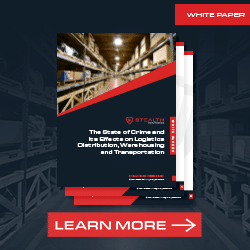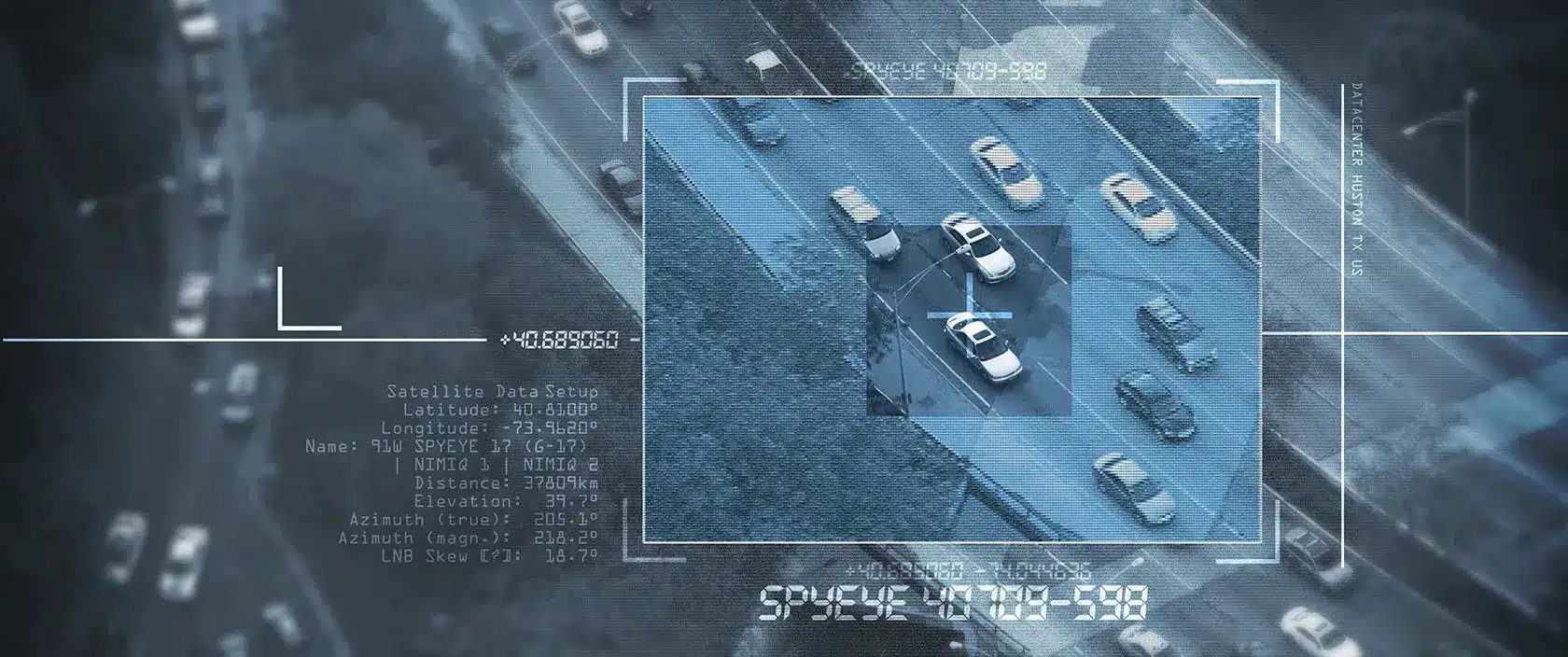Cargo theft continues to be a problem that imposes significant financial consequences for businesses. In recent years, the food and beverage industry has seen a surge in cargo theft, causing substantial losses. According to a CNBC article that references a CargoNet report, food and beverage industry theft made up 32% of all cargo thefts in the U.S. in 2022.
This is a significant increase from the previous year. Unfortunately, this trend is expected to continue in 2023. It highlights the need for increased security measures to protect the industry’s supply chain.
The financial impact of cargo theft can be significant, with losses often running into millions of dollars. In addition to the direct loss of goods, businesses may also face additional costs such as insurance premiums and legal fees.
There is also the potential that a report of cargo theft could hurt a company’s reputation and have long-term consequences. The financial impact of cargo theft can be particularly devastating for smaller businesses, which may not have the resources to absorb the losses.
What’s Causing the Rising Cargo Theft for Food and Beverage?
The rise in food and beverage cargo theft can be credited to various factors. These include the high demand for the products, their high resale value, and their ease of transport. Additionally, the pandemic has created additional opportunities for theft as supply chain troubles have made it harder to monitor shipments. Criminals have taken advantage of these conditions. Therefore, it leads to a sharp increase in food and beverage cargo theft across the U.S.
One of the main issues facing the food and beverage industry is the lack of adequate security measures to protect cargo. Many companies rely on traditional security methods, such as locks and seals. Criminals can break these easily as their methods have grown more sophisticated. They use tactics like hacking into GPS systems to locate and steal cargo. As a result, companies need to invest in more advanced security measures to protect their shipments effectively.
Another problem is that businesses and law enforcement agencies do not collaborate. Unfortunately, cargo theft is often a low priority for law enforcement. Because of this, recovery of stolen goods is not likely to happen. Nonetheless, it’s still worth it for companies to make the effort to work closely with law enforcement to ensure that cargo theft is taken seriously and that stolen goods are recovered quickly.
4 Ways the Food and Beverage Industry Can Prevent Cargo Theft
To combat the rising threat of food and beverage cargo theft, companies need to take a proactive approach to security. No one security solution can do it all. Therefore, the most effective way to protect cargo is to use a layered approach to security.
This can include investing in advanced security measures. Companies should also conduct regular risk assessments and implement appropriate security protocols to mitigate any vulnerabilities in their supply chain. Here are four ways to strengthen security.
1. Use smart locks, sensors, GPS trackers, and seals
While locks and seals and GPS systems are not foolproof, they’re still a valuable part of the security program. The key is to combine them with technological solutions coming up later in this article.
Locks and sensors have gotten smarter. You can look into light sensors that can report slight changes in the ambient light. The opening of truck doors can set off the sensor.
For refrigerated trailers, it’d be worth considering the use of temperature sensors. These send a notification to the dispatchers whenever the temperature drops. It can be a sign the cargo has been taken. When this happens, then the cargo may have left a refrigerated trailer. The dispatchers contact the truck driver to check the truck.
There are sensors that may be able to replace the GPS. It’s essential to ask questions about GPS trackers and hacking. You want to ensure you can find one that has a lower risk of hacking.
Other options to investigate are high-security rear door locks and air cuff locks. These lock the dashboard brake valves. What they do is prevent the unauthorized movement of the truck and trailer.
Something you need to know. Savvy criminals have the resources to create replicas of security devices with a 3D printer. In just a few minutes, they can print an almost identical copy of ISO 17712 high-security cargo seals and locks. They use these to break the original seals and replace them with the seal they printed. One way to stop this is to change the colors of the seals.
Remind drivers to pay attention all around them and do a full inspection of the tractor-trailer every time they return to the truck. They need to confirm all seals and locks remain intact. If at all possible, avoid providing any documentation indicating what’s in the tractor-trailer. This can potentially reduce the risk of theft. But of course, some crooks will steal anything.
2. Partner with law enforcement
Collaboration is also key to combatting cargo theft. Companies should work closely with law enforcement agencies to ensure that stolen goods are recovered quickly and that criminals are brought to justice. This can involve sharing information about thefts and working together to develop strategies to prevent future incidents.
Stealth Monitoring already has partnerships with law enforcement agencies across North America. If you work with us, it could save you a lot of time in trying to nurture that relationship.
3. Add an access control system
Businesses should consider the use of technology to improve the efficiency and security of their supply chain. An access control system is one such technology that can be valuable. The purpose of an access control system is to control access to the facility.
It also lets you manage access to different areas of the facility and restricted places. The system can manage who can enter the parking garage or gated parking lot.
An access control system comes with the following benefits:
- Automating identity verification.
- Controlling access to parking, buildings, and restricted areas.
- Using photos on badges.
- Avoiding the need for keys.
- Reducing manual security procedures.
Some access control systems have a feature that lets you grant and revoke access based on a set time or for a timeframe. A cloud-based access control system may be able to monitor for potential security breaches.
What makes an access control system different from other automated entry systems is that it can track who accesses any part of the facility. This is invaluable for companies with a server room that houses data about customers and other sensitive information.
If you integrate an access control system with remote video surveillance, you’ll level up the security. Integrated security allows the system to match the time stamp from the access control with the video to find out what happened at a certain time.
4. Implement remote video surveillance
Remote video surveillance takes a proactive approach to security and helps deter crime. You can fortify video surveillance when you opt for one that combines video analytics and trained human monitoring operators. The analytics piece of the partnership scans all the cameras for a match to any one of its many programmed scenarios.
When it finds a match, it alerts the monitoring operator who can respond based on what’s happening. One possibility is sending a warning using an onsite speaker to warn intruders they are being watched. They can also contact the police while tracking the suspects.
Any time cargo theft occurs, law enforcement may not locate the guilty party. This is where video surveillance with remote monitoring shines. It’s impossible to have people everywhere in the facility at all times. That is not a problem for the cameras, which are all around the property with two different pairs of eyes watching it: video analytics and the trained monitoring operator. The system can store all recorded footage.
For times when the police don’t arrive before the suspects get away, the video cameras can help identify and catch them. The high-resolution cameras can help identify the suspects and any other distinguishing information, such as a license plate or fleet number.
Video surveillance with monitoring does more than deterring crime. Sometimes a company may not find out about a problem right away. For example, liability claims aren’t obvious on camera. A person makes a claim that they got hurt or their vehicle was damaged on the property. A video analyst can locate the footage and provide the video clips to use as evidence of what actually happened.
Case in point: A driver in the company’s fleet truck damaged another car during daylight hours. There was no one around to witness it. But there was someone at a different location who caught it. The monitoring operator saw the accident on the monitors. They used the pan-tilt-zoom cameras to get a clear look at the truck’s license plate, fleet number, and driver’s face.
What Are the Next Steps to Help Stop Cargo Theft?
The rise in food and beverage cargo theft is significant enough to require companies to make it a high priority. They need to invest in advanced security measures and technologies as well as collaborate with law enforcement agencies to help effectively protect their supply chain.
The food and beverage industry must protect its assets, inventory, and employees. Otherwise, there could be a domino effect on your business between inflation and supply chain problems. Failure to take these steps could result in significant financial losses, damage to a company’s reputation, and long-term consequences for the industry as a whole.
To learn more about video surveillance with remote monitoring, pick up the free guide “Remote Video Monitoring: More Than Just Catching Criminals.” If you want to learn more about cargo theft deterrence security technologies, please contact us.
Texas Private Security License Number: B14187.





